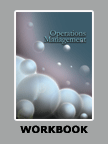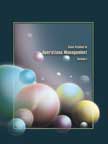Tesco's Supply Chain Management Practices
|
|
ICMR HOME | Case Studies Collection
Case Details:
Case Code : OPER054
Case Length : 19 Pages
Period : 2000-05
Organization : Tesco
Pub Date : 2006
Teaching Note :Not Available
Countries : UK
Retail
To download Tesco's Supply Chain Management Practices case study
(Case Code: OPER054) click on the button below, and select the case from the list of available cases:

Price:
For delivery in electronic format: Rs. 400;
For delivery through courier (within India): Rs. 400 +Shipping & Handling Charges extra
» Operations Case Studies
» Case Studies Collection
» ICMR HOME
» View Detailed Pricing Info
» How To Order This Case
» Business Case Studies
» Case Studies by Area
» Case Studies by Industry
» Case Studies by Company 
Please note:
This case study was compiled from published sources, and is intended to be used as a basis for class discussion. It is not intended to illustrate either effective or ineffective handling of a management situation. Nor is it a primary information source.
Chat with us

Please leave your feedback

|
|




<< Previous
Background Note
|
Tesco was founded in 1919 by Jack Cohen (Cohen), who invested his serviceman's
gratuity of £30 in a grocery stall. The first private label product introduced
by Cohen was Tesco Tea. The name Tesco was a combination of the initials of the
tea supplier - TE Stockwell and the first two letters of Cohen's name.
Tesco opened its first store in 1929. Cohen was influenced by the supermarket
culture in America and tried to introduce the concept in the UK. The company's
driving force was the idea: 'Pile it high and sell it cheap.' In 1947, Tesco
went public and a year later, Tesco self-service stores were started. In 1956,
the first Tesco self-service supermarket was opened.
|

|
In the 1960s, Tesco went on an expansion spree and acquired several store
chains. The Retail Price Maintenance (RPM) Act8
in Britain prohibited large retailers from pricing goods below a price
agreed upon by the suppliers.
To overcome this obstacle to price reduction, Tesco introduced trading
stamps which were given to customers when they purchased products; they
could be traded for cash or other gifts. RPM was abolished in 1964, and from
then on, Tesco was able to offer competitively priced products to its
customers. The first Tesco superstore, with an area of 90,000 square feet,
was opened in 1967.
|
|
By the 1970s, Tesco's 'Pile it high, sell it cheap' philosophy no longer
appealed to shoppers. As people got richer, they started demanding expensive
and luxury items. The poor performance of Tesco even led to the saying 'doing a Tesco,' which meant snatching defeat from victory. Tesco's image
took a further beating when Imperial Tobacco Company which had considered
acquiring Tesco as a part of its diversification strategy, did not go ahead
with the deal as it felt that Tesco might damage its corporate image. To
arrest the downslide in its fortunes, Tesco's management went in for an
overhaul of its stores during the decade. Several stores were closed down to
concentrate on the superstores. |
The smaller stores that still remained were refurbished to
make them more customer-friendly. Tesco diversified into operating petrol pumps
in 1974. In 1975, Tesco offered price discounts through a scheme called
'Checkout at Tesco.' By 1979, the company's turnover had reached £1 billion...
Excerpts >>
|
|










